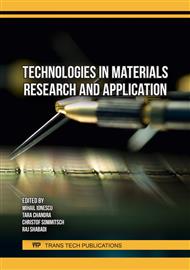p.9
p.15
p.21
p.31
p.39
p.45
p.51
p.57
p.65
A Study on Inclusion Characterisation of Steel Using a Novel Inclusion Characterisation Tool
Abstract:
The role of non-metallic inclusions is gaining increasing attention in steel research. Various inclusion characterisation techniques and methods are utilised in order to obtain reliable and accurate results. Automatic inclusion measurements carried out using field-emission scanning electron microscope with energy dispersive spectroscopy produces a large amount of data about detected inclusions in the scanned area. The data obtained must be processed and analysed in one way or another, for example, to classify the inclusions or construct size distributions. Until now, a Matlab script has been used to determine the phase composition of inclusions, and to classify them accordingly. The Matlab script has acted as the basis for the recently developed Karakterizer tool, written in Python. In addition to less restricted use, the recent advances include a graphical user interface. This paper demonstrates the use of Karakterizer tool in characterising inclusions with examples of direct-quenched martensitic steels with a yield strength of 1000 MPa.
Info:
Periodical:
Pages:
39-44
Citation:
Online since:
December 2023
Keywords:
Price:
Сopyright:
© 2023 Trans Tech Publications Ltd. All Rights Reserved
Share:
Citation:



